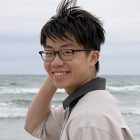Evan Massaro is a PhD candidate in mechanical engineering whose research focuses on finding fast and efficient Monte Carlo algorithms to model and simulate rarefied gas dynamics. As a MathWorks Fellow, Evan will work to validate and characterize a new model that addresses specific drawbacks of the direct simulation Monte Carlo (DSMC) algorithm. DSMC is the current state-of-the-art and runs on US Department of Energy supercomputers to model atmospheric entry of hypersonic flights; however, when the simulated gas density spans many orders of magnitude, DSMC becomes statistically inefficient, requiring a prohibitive amount of computational resources. Through computational experiments in systems with large density gradients, Evan discovered an efficient and accurate Monte Carlo algorithm based on importance sampling, which led to a 10 to 100 times reduction in computational resources compared to DSMC. MATLAB has been an instrumental resource in his work. Evan’s research has yielded an innovative synthesis of disparate computational methods to solve a class of problems that have challenged researchers for decades. His work has great potential to deliver innovative solutions to real-world problems through computational physics.
https://engineering.mit.edu/wp-content/uploads/2024/10/headshot_Massaro_Evan_Mathworks_MechE_2025.jpg
Website
Evan Massaro
Mechanical Engineering https://engineering.mit.edu/fellows/evan-massaro/Leticia Mattos Da Silva is a PhD candidate in electrical engineering and computer science whose research seeks to advance applications of nonlinear partial differential equations (PDE) in the fields of geometry processing and computer graphics. With the support of her second MathWorks Fellowship, Leticia will explore the use of stochastic differential equations (SDE) associated with a parabolic PDE for an image task application. A second avenue for future work in Leticia’s PhD involves developing a new numerical approach to solving a PDE known as the Landau equation. All of Leticia’s work has been implemented in MATLAB, and she is making significant contributions to the constellation of MathWorks tools through her research. Her plans include developing new techniques for a broader class of nonlinear PDE and investigating applications for their corresponding SDE. Her work has the potential to advance far-reaching applications, including a numerical scheme for the Landau equation to model particle collisions in plasma simulations, and a new algorithm for image generation.
https://engineering.mit.edu/wp-content/uploads/2024/10/headshot_Mattos_Da_Silva_Leticia_MathWorks_SoE_2025.jpg
Website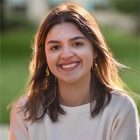
Leticia Mattos Da Silva
Electrical Engineering and Computer Science https://engineering.mit.edu/fellows/leticia-mattos-da-silva-2/Carissma McGee is a PhD candidate in aeronautics and astronautics whose research is focused on high-contrast imaging and exoplanet characterization. As a MathWorks Fellow, Carissma will pursue several goals connected to the Nancy Grace Roman Space Telescope. The goal of Carissma’s work, which draws significantly on MATLAB, is to ensure precise mass measurements and optimize observational strategies for the mission using a combination of advanced optical systems, deformable mirrors, and sophisticated control algorithms. By modeling the behavior of light as it passes through the telescope’s optics, interacts with the deformable mirrors, and reaches the science camera, Carissma will ensure that the Roman Space Telescope achieves and maintains the desired high-contrast conditions in the dark zone. Her work is yielding new MATLAB models and algorithms for high-contrast imaging and wavefront control of value to other researchers. Carissma’s research and critical support of the Roman Space Telescope mission have the potential to offer critical new insights into the formation and evolution of planetary systems.
https://engineering.mit.edu/wp-content/uploads/2024/10/headshot_Carissma_Mathworks_AeroAstro_2025.jpg
Website
Carissma McGee
Aeronautics and Astronautics https://engineering.mit.edu/fellows/carissma-mcgee/Adriana Mitchell is a PhD candidate in aeronautics and astronautics whose research is centered on autonomous visual navigation for spacecraft. Visual navigation is a powerful tool for planetary landings but is restricted in its application due to its susceptibility to variations in illumination conditions. To address this challenge, Adriana is developing algorithms for robust navigation under variable illumination conditions, focusing specifically on terrain-relative navigation during planetary entry, descent, and landing. Supported by her second MathWorks Fellowship, Adriana is collaborating with NASA’s Jet Propulsion Laboratory to apply her algorithms to Lunar and Martian image datasets. Her approach involves matching terrain features that remain constant throughout the day, thereby enabling the real-time descent imagery to be localized to an a-priori map with different lighting. Consequently, image alignment can be maintained, ensuring safe and precise spacecraft landings. MathWorks products, including MATLAB’s Image Processing Toolbox, have been pivotal in her work. By offering new approaches for safe and precise spacecraft landings on planetary bodies, Adriana’s research has strong potential to advance aerospace engineering and space exploration.
https://engineering.mit.edu/wp-content/uploads/2024/10/headshot_Mitchell_Adriana_Mathworks_AeroAstro_2025.jpg
Website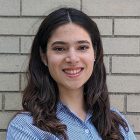
Adriana Mitchell
Aeronautics and Astronautics https://engineering.mit.edu/fellows/adriana-mitchell-2/Bria Morse is a PhD candidate in aeronautics and astronautics whose research aims to enhance knowledge of the impacts of patient transport via ground and air on human physiology. Increased use of unmanned or remotely operated vehicles for casualty transport from combat zones and disaster areas is anticipated, yet the impacts of such transport on the body are not well understood. As a MathWorks Fellow, Bria will study the impact of transport-related stressors, such as acceleration force and vibration, on a hemorrhaging patient. Her project has two primary aims: 1) to isolate key environmental and physiological parameters for influencing decision-making in transport environments, and 2) to determine the dose-response effect of patient severity and key transport parameters on patient stability using a novel lower-body negative pressure chamber and custom vacuum to simulate hemorrhage in a dynamic transport environment. MATLAB and Simulink will be important resources for data visualization and analysis. Bria’s research has the potential to provide a fuller understanding of the impacts of casualty transport via unmanned or remotely operated vehicles to improve patient outcomes and save lives.
https://engineering.mit.edu/wp-content/uploads/2024/10/headshot_Morse_Bria_Mathworks_AeroAstro_2025.jpg
Website
Bria Morse
Aeronautics and Astronautics https://engineering.mit.edu/fellows/bria-morse/Abhishek Mukherjee is a PhD candidate in electrical engineering and computer science. His research aims to broaden the understanding of strain engineering in 2D materials to develop hyperspectral IR photodetectors that leverage the flexoelectric effect. Abhishek is investigating the effect of engineered in situ strain on semiconductors to break inversion symmetry and enhance the photogalvanic effect (PGE) in novel material candidates. PGE enables light-to-current efficiency exceeding the Shockley-Queisser limit, offering exciting opportunities for energy harvesting, photodetection, optical rectification, spintronics, imaging, and LIDAR technology. Utilizing MATLAB’s Deep Learning Toolbox, Abhishek plans to create a portrait of an ideal PGE material candidate, using data from materials experimentally shown to exhibit high PGE and identifying patterns in optoelectronic properties that manifest in the form of a high flexoelectric coefficient. Incorporating machine learning will enable the rapid evaluation of hundreds of materials and help unlock new functionalities in photonic devices. Abhishek’s research has the potential to advance fundamental knowledge in his field and pave the way for revolutionary photonic device design in many spheres, including night vision, celestial navigation, optical computing, and renewable energy.
https://engineering.mit.edu/wp-content/uploads/2024/10/headshot_Mukherjee_Abhishek_Mathworks_SoE_2025.jpg
Website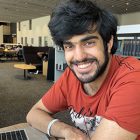
Abhishek Mukherjee
Electrical Engineering and Computer Science https://engineering.mit.edu/fellows/abhishek-mukherjee/Simo Pajovic is a PhD candidate in mechanical engineering whose research addresses challenges in nanophotonics and light-matter interactions, with critical applications in energy efficiency and medical imaging. As a MathWorks Fellow, he will focus on understanding electromagnetic nonreciprocity in the context of radiative heat transfer, which may unlock exciting opportunities in engineering emitters and absorbers violating Kirchhoff’s law of thermal radiation, in addition to unidirectional waveguides and optical isolators and circulators in the infrared spectrum. His recent projects have included the development of theory and MATLAB-enabled numerical methods to utilize magneto-optical nonreciprocity for control of thermal radiation in both the macro- and microscopic regimes and engineering radiative heat transfer using nanophotonics to improve thermal management in X-ray tubes. By expanding our understanding of nanophotonics and applying those discoveries to conceptualize new, light-based energy conversion devices, Simo’s work could advance technology in many spheres, from the thermal management of electronics, medical equipment, and buildings, to radiative energy harvesting and conversion.
https://engineering.mit.edu/wp-content/uploads/2024/10/headshot_Pajovic_SImo_Mathworks_SoE_2025.jpg
Website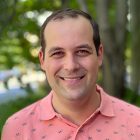
Simo Pajovic
Mechanical Engineering https://engineering.mit.edu/fellows/simo-pajovic/Gyutae (Jack) Park is a PhD candidate in nuclear science and engineering whose research is focused on the design and optimization of microreactors, also known as nuclear batteries (NB), a potentially critical source of carbon-free energy that is smaller than a traditional reactor. Specifically, Jack is pursuing the design optimization of two NB design concepts: a sodium-cooled, graphite-moderated, thermal-spectrum microreactor and an organic-cooled (hydrocarbons), water-moderated thermal-spectrum microreactor. Jack is considering the factors of core neutronics and thermal-hydraulics safety, balance of plant design, and plant cost. In particular, he hopes to identify the sensitivity of each design parameter to determine which inputs play a key role in determining each reactor’s figures of merits, such as cycle length, operating power, cost, and electricity generation. MATLAB has been one of the primary coding platforms for Jack’s project. His research has the potential to advance microreactors, which represent a renewable energy source with a wide range of applications, including industrial heat and/or electricity sources, disaster relief, remote defense installations, maritime and space propulsion, and surface power for moon and planetary exploration.
https://engineering.mit.edu/wp-content/uploads/2024/10/headshot_Park_Gyutae_Jack_Mathworks_SoE_2025.jpg
Website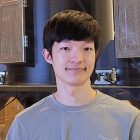
Gyutae (Jack) Park
Nuclear Science and Engineering https://engineering.mit.edu/fellows/gyutae-jack-park/Sanghyun Park is a PhD candidate in mechanical engineering whose research focuses on developing long-acting implantable systems to enhance patient acceptability and adherence to treatment, particularly addressing preventive healthcare for HIV, tuberculosis, malaria, and contraception for family planning. As a MathWorks Fellow, he is developing biodegradable osmotic pumps that have demonstrated the ability to provide constant drug release through osmosis- driven mechanical infusion and become absorbed into the body at the end, eliminating the need for invasive removal surgery. In addition, he is working on transformative injectable formulations leveraging the self-assembling mechanism of drug crystals upon injection. Utilizing AI and advanced computational methods, he is expanding the applicability of the platform technologies to different areas of therapeutics by overcoming the conventional trial-and-error approach for formulation screening and analyzing preclinical data more efficiently. MATLAB plays a central role in his work, and he is sharing tools that will foster innovation in the MathWorks community. Sanghyun’s work has strong potential to offer pioneering advancements at the intersection of biomedical engineering and AI, addressing various health and clinical issues.
https://engineering.mit.edu/wp-content/uploads/2024/10/headshot_Park_Sanghyun_Mathworks_MechE_2025.jpg
Website
Sanghyun Park
Mechanical Engineering https://engineering.mit.edu/fellows/sanghyun-park/Daniel Pfrommer is a PhD candidate in electrical engineering and computer science whose research seeks to advance the theoretical analysis and algorithmic development of high- dimensional control systems. As a MathWorks Fellow, Daniel will focus on the approximation of classical control algorithms by neural network-based models. His current work aims to develop new methods for learning latent state representations in high-dimensional, partially observed dynamical systems, performing filtering over the learned representation, and finally, developing new algorithms for learning control policies based on these methods. Daniel’s broader goal is to create a general filtering algorithm capable of performing inference over learned high-dimensional state representations directly from video data. This could yield a tractable approach for mining an entire “world model” from large quantities of unsupervised video data in a scalable manner. His work, which draws heavily on MathWorks products, has implications for the field of machine learning, enabling more efficient compression algorithms, new algorithms for AI-based content editing, and better model-based reinforcement learning algorithms. These capabilities could advance work in many domains, from the deployment of robotic systems to economic and social policy decision-making.
https://engineering.mit.edu/wp-content/uploads/2024/10/headshot_Pfrommer_Daniel_Mathworks_EECS_2025.jpg
Website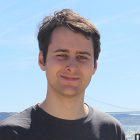
Daniel Pfrommer
Electrical Engineering and Computer Science https://engineering.mit.edu/fellows/daniel-pfrommer/Randall A. Pietersen is a PhD candidate in civil and environmental engineering whose research focuses on creating new deep-learning tools and hyperspectral imaging analysis techniques for USAF airfield damage assessment and the detection of unexploded explosives (UXO). A previous MathWorks Fellowship enabled Randall to validate the principles of his automated sensor calibration methodology and evaluate the process; a second MathWorks Fellowship will support his ongoing efforts to develop synthetic hyperspectral data generation pipelines in support of new spatiospectral machine-learning models that use reflectance-corrected spectral data to detect UXO. He has contributed to numerous MATLAB toolkits, including Deep Learning and Hyperspectral Data Processing. Randall’s research directly addresses the need for improved methods for predictive performance when fielding machine-learning models exposed to limited training data. His work has the potential to advance a broad range of applications of near-surface hyperspectral imaging, from military contexts to mining, agriculture, disaster response, and commercial infrastructure management.
https://engineering.mit.edu/wp-content/uploads/2024/10/headshot_Pietersen_Randall_A_Mathworks_SoE_2025.jpg
Website
Randall A. Pietersen
Civil and Environmental Engineering https://engineering.mit.edu/fellows/randall-a-pietersen/Diego Quevedo-Moreno is a PhD candidate in mechanical engineering whose research is focused on the development of implantable, biomimetic, medical devices that augment or assist native function. With the support of a MathWorks Fellowship, Diego will work on the design and testing of an implantable ventilator to treat respiratory failure. For patients with severe diaphragm dysfunction who are not candidates for minimally invasive treatments, the current alternative is permanent airway tethering to a mechanical ventilator via tracheostomy, which can severely compromise autonomy and quality of life. To address this, Diego is creating an implantable soft robotic ventilator capable of restoring respiratory function. He has successfully demonstrated the ability of the device to assist in respiration and is now creating a MATLAB-based computational model and a physiologically relevant benchtop platform to fully simulate the respiratory biomechanics of the rib cage and diaphragm. MathWorks tools and products have been critical in Diego’s research. His work has exciting potential to create an innovative therapeutic alternative for artificial ventilation, ultimately improving patient quality of life and advancing the field of medical robotics.
https://engineering.mit.edu/wp-content/uploads/2024/10/headshot_Quevedo-Moreno_Diego_Mathworks_MechE_2025.jpg
Website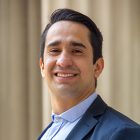
Diego Quevedo-Moreno
Mechanical Engineering https://engineering.mit.edu/fellows/diego-quevedo-moreno/Kristen Riedinger is a PhD candidate in civil and environmental engineering whose research focuses on environmental micropollutants. Specifically, Kristen investigates drinking water pollution by N-nitrosamines, a family of organic compounds that are ubiquitous in the environment and potentially harmful to human health, with a particular focus on N-nitrosodimethylamine (NDMA). As a MathWorks Fellow, Kristen will pursue two primary objectives: to study the distribution of NDMA within treated water networks and to develop a quantitative understanding of NDMA formation within these systems. Currently, she is investigating NDMA in the public water systems of two communities with historical water quality issues through sample collection and analysis. She further plans to collect samples from sites across the country. Kristen has used MATLAB to manipulate a large EPA dataset representing 1,198 public water systems with the ultimate goal of developing an empirical model to predict NDMA occurrence in treated drinking water systems. The insights emerging from Kristen’s research have the potential to contribute critical knowledge to assess and mitigate water contamination and protect communities from potential adverse health effects from their environment.
https://engineering.mit.edu/wp-content/uploads/2024/10/headshot_Riedinger_Kristen_Mathworks_CEE_2025.jpg
Website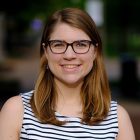
Kristen Riedinger
Civil and Environmental Engineering https://engineering.mit.edu/fellows/kristen-riedinger/Mumin Jin Sass is a PhD candidate in electrical engineering and computer science whose research integrates signal processing, machine learning, and array processing to expand the capabilities of sensing systems for radio frequency, acoustic, and other modalities. Supported by her first MathWorks Fellowship, Mumin concentrated on machine-learning approaches to enhance automotive radar imaging in autonomous vehicles. Her second MathWorks Fellowship will enable her to explore a related line of inquiry at the intersection of signal processing and systems and circuits: rethinking analog-to-digital conversion. She aims to create application-specific data converter architectures that leverage the availability of abundant and inexpensive digital signal processing to dramatically reduce the number of bits required to achieve target performance levels. This architecture could enable strongly interference-resistant data conversion. MATLAB has been a critical resource in Mumin’s research, and she has created multiple tools of value for the broader MathWorks community. By developing new approaches to forming high-quality representations of signals with few measurements, Mumin’s work has the potential to advance a wide range of applications, from automotive radars to medical imaging.
https://engineering.mit.edu/wp-content/uploads/2024/10/headshot_Sass_Mumin_Jin_Mathworks_SoE_2025.jpg
Website
Mumin Jin Sass
Electrical Engineering and Computer Science https://engineering.mit.edu/fellows/mumin-jin-sass/Peter Satterthwaite is a PhD candidate in electrical engineering and computer science whose research aims to create scalable approaches for fabricating devices and systems from novel nanomaterials, leveraging their most promising properties. His work to date has explored the clean, direct integration of 2D materials, demonstrating a completely dry and sacrificial layer-free approach to 2D material processing that addresses the long-standing challenge of degradations induced by processing. Supported by a MathWorks Fellowship, Peter will extend that promising line of research and investigate the integration of molecular materials into active nanoscale devices. Peter is also working on the scalable fabrication of molecular devices with built-in metrology that allows for the study and control of device performance at the atomic scale. MathWorks software has been an indispensable tool in Peter’s work to translate novel nanodevices into practical systems. His research is speeding up the creation of next-generation computing and sensing platforms to address the growing demands of data-intensive applications in machine learning, artificial intelligence, and the internet of things.
https://engineering.mit.edu/wp-content/uploads/2024/10/headshot_Satterthwaite_Peter_Mathworks_EECS_2025.jpg
Website
Peter Satterthwaite
Electrical Engineering and Computer Science https://engineering.mit.edu/fellows/peter-satterthwaite/Miranda Schwacke is a PhD candidate in materials science and engineering whose research seeks to develop new energy-efficient electrochemical programmable resistors, or electrochemical random-access memory (ECRAM), for physical implementations of neural networks that mimic the connectivity of the brain. Her first MathWorks Fellowship enabled her to explore new approaches to informed ion selection and materials design and to demonstrate a proof-of-concept for ECRAM using Mg2+ as the working ion. This work showed how careful choice of the ion-channel material system can improve device stability and compatibility with silicon processing. Her second MathWorks Fellowship will enable Miranda to explore the importance of channel microstructure in ECRAM devices. Her recent results suggest that ion and electron insertion into polycrystalline WO3 can strongly impact grain boundary space charge resistances, and this can be the dominant resistance modulation mechanism in ECRAM devices for low channel ion concentrations. Miranda’s work, which draws significantly from MATLAB tools, is yielding novel insights with important implications for the study and application of ECRAM devices and could inform the development of next-generation brain-inspired technologies.
https://engineering.mit.edu/wp-content/uploads/2024/10/headshot_Schwacke_Miranda_Mathworks_SoE_2025.jpg
Website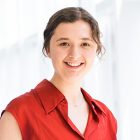
Miranda Schwacke
Materials Science and Engineering https://engineering.mit.edu/fellows/miranda-schwacke-2/Devang Sehgal is a PhD candidate in medical engineering and medical physics whose research aims to improve the clinical utility of electrical stimulation techniques for the treatment of neurological disorders. Specifically, Devang seeks to address the shortcomings of current trial- and-error-reliant methods by building a deeper understanding of the neurophysiological effects of stimulation and the brain network dynamics underlying diseases. He is testing a new multisite stimulation approach that could enable modulation of the brain network at scale. Devang’s project includes conducting experiments to compare the effects of single and dual-site stimulation in epilepsy patients, investigating the changes to the brain’s functional connectivity induced by delivery of stimulation from two sites, with the goal of contextualizing results in a patient-specific manner to aid eventual clinical deployment. MATLAB tools such as Blackrock’s Neural Processing Kit and Chronux are integral to Devang’s work, and he has made significant contributions to the development of MATLAB API CereLAB. His research is expanding our understanding of the underlying mechanisms of intracranial stimulation which is critical for developing new stimulation approaches to treat epilepsy and other brain disorders.
https://engineering.mit.edu/wp-content/uploads/2024/10/headshot_Sehgal_Devang_Mathworks_SoE_2025.jpg
Website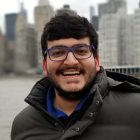
Devang Sehgal
Institute for Medical Engineering and Science https://engineering.mit.edu/fellows/devang-sehgal/Devosmita Sen is a PhD candidate in chemical engineering whose research aims to better understand and model the micro- and macroscopic properties of polymer networks, which are widely used in common products, from rubber tires to contact lenses, and are critical for cutting- edge applications such as drug delivery and soft robotics. As a MathWorks Fellow, Devosmita will expand her innovative approaches in modeling the topology of complex polymer networks to enable more accurate prediction of desirable properties such as elasticity and toughness. To that end, she is developing MATLAB-based numerical models to quantify network topologies and illuminate aspects such as the dynamic bond exchanges shaping that topology. She has also developed a novel algorithm to elucidate the correlation between cyclic network structures and nonlinear fracture properties and plans to design simulations to understand the fundamental mechanism behind network fracture. Devosmita’s work offers exciting new directions in the study of polymer networks to advance novel material design, and insights from her research may have useful applications in many network types, from biology to the internet to transportation.
https://engineering.mit.edu/wp-content/uploads/2024/10/headshot_Devosmita_Mathworks_SoE_2025.jpg
Website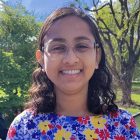
Devosmita Sen
Chemical Engineering https://engineering.mit.edu/fellows/devosmita-sen-2/Dongchel Shin is a PhD candidate in mechanical engineering whose research focuses on creating quantum and precision metrology platforms that probe fundamental physics and pave the way for future industrial technology. As a MathWorks Fellow, Dongchel will take a lead role in a cutting- edge experiment to observe gravitational interaction between two quantum systems, with the goal of answering a central question in modern physics: “Is gravity quantum?” His contributions include leading experiment design, which involved studying the effects of noises that can impact the motion of milligram scale masses with gravitational interactions of interest. He also created a novel theory of interferometric optical lever detection, which he used to demonstrate a record-setting quantum-noise-limited angular motion readout at the level of 10–12 rad. Finally, he is developing novel optimal signal processing techniques to extend and augment MATLAB’s multi-taper spectral estimation. Throughout his work, MATLAB has been an indispensable tool. Dongchel’s cutting-edge research in quantum optics, quantum measurements, and signal processing has the potential to deliver valuable knowledge and capabilities to the growing field of quantum engineering.
https://engineering.mit.edu/wp-content/uploads/2024/10/headshot_DOngchel_Mathworks_MechE_2025.jpg
Website
Dongchel Shin
Mechanical Engineering https://engineering.mit.edu/fellows/dongchel-shin/Oswin So is a PhD candidate in aeronautics and astronautics whose research seeks to develop safe machine-learning methods for critical autonomous systems and bridge the gap between simulation and real-world systems. In previous research, Oswin has drawn on MathWorks’s Simulink to develop safe controllers for cases where the dynamics may be complicated but are known. As a MathWorks Fellow, he will build on this work, applying tools from reachability analysis and reinforcement learning to develop techniques that can provide safety guarantees even in cases where modeling errors are present. Concurrently, he will pursue new methods to perform adaptive safety by combining robust safety with online adaptation techniques such as adaptive control and Gaussian processes. Oswin has made significant contributions to the modeling and design of complex systems, drawing on MATLAB and Simulink, and enabled the development of advanced control algorithms that are both reliable and efficient. His research holds strong potential to deliver new tools and methods to advance real-world, safety-critical systems.
https://engineering.mit.edu/wp-content/uploads/2024/10/headshot_Oswin_Mathworks_AeroAstro_2025.jpg
Website